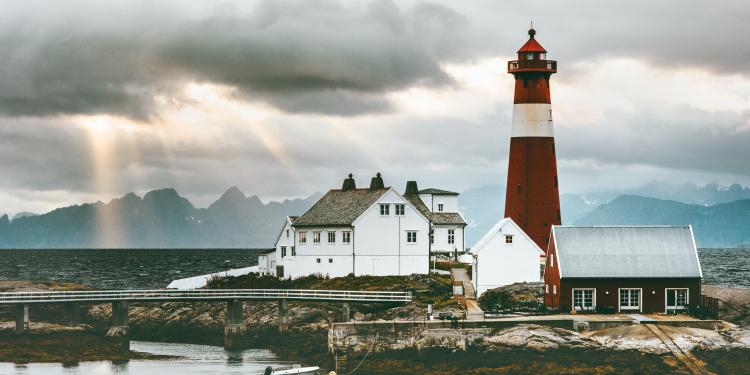
Quiz

The award-winning translator reveals the books that made an impact on him.
From the novel that made him want to work in translator to a contemporary new voice in fiction, here’s what’s on Damion Searls’ bookshelf.
After making the list for the International Booker Prize, not once, but twice, you could call Damion Searls a veteran of the prize. In 2020 he was longlisted for his translation of the first volume in Jon Fosse’s Septology trilogy and this year, he’s shortlisted for his translation of the third volume, A New Name: Septology VI-VII.
A translator from German, French, Norwegian, and Dutch and a writer in English, Searls grew up in New York and studied at Harvard and the University of California, after which he began to specialise in literary fiction. He has translated titans of literature such as Proust and Nietzsche and has won numerous awards and fellowships.
Searls’ love of literature drove him to learn Norwegian specifically to read Jon Fosse’s work and testament to the linguist’s ability, the International Booker Prize judges said his “translation unfurls Fosse’s slow sentence with immense precision and beauty.”
So, to celebrate his place on the list, we asked him about the books that have made an impact on him. Here’s what’s inspired him throughout this life.
Malina by Ingeborg Bachmann, translated by Philip Boehm
A stunning, dark, sometimes hilarious novel by a towering poet, short-story writer, and reinventor of the German language after WWII: fractured selves and tormented love in modern Vienna (also one of the great Vienna novels). The translation by Philip Boehm was probably the first book I read that made me want to be a translator—I had read books in translation before, of course, but this was the first that felt to me like a truly great work of translation, too.
The Professor’s House by Willa Cather
Cather is hardly unknown, but she is mostly left out of the standard stories of American literature, of modernism, and so on. This novel about a Midwestern family and memories of the personal and American past is so surprising, so good, and so beautiful that it almost makes those other stories seem unimportant. My first published essay was about the experience of reading this book.
To the Lighthouse by Virginia Woolf
I was a budding Mrs. Dalloway scholar in graduate school, and I would often think that Mrs. Dalloway was the “greater” book while To the Lighthouse was the more “perfect” book—flawless and complete. What is there to say about it? Mrs. Ramsay has a dinner; time passes; life happens in all its glory.
The Summer Book by Tove Jansson, translated by Thomas Teal
This exquisite short novel about a girl and, mostly, her grandmother on an island gives off To the Lighthouse vibes in its depictions of family, creativity, and loss, and in its crystalline beauty. Jansson will always be remembered as the brilliant creator of the Moomin creatures, comics, and stories; how much more surprising it was for me to discover that she was also a stellar writer for adults. Like if Charles Schulz and Jonathan Franzen were the same person.
Strange Beasts of China by Yan Ge, translated by Jeremy Tiang
I don’t want to list only dead authors, so here’s a recent discovery for me: a very contemporary voice that feels genuinely new, writing about the semi-human creatures—or are they really just aspects of ourselves?—inhabiting and haunting a modern Chinese city. The quasi-pseudo-scientific “zoology” of these beasts, their wavering reality and humanity, makes for fascinating reading that slowly gives way to a winning narrator and her own fully human story.
I can’t not list this book: the best contemporary novel I’ve read in twenty years, full stop. Don’t believe the people who tell you it’s “difficult.”
Main image: Tranoy Lighthouse, Norway. © Everste/iStock/Getty
